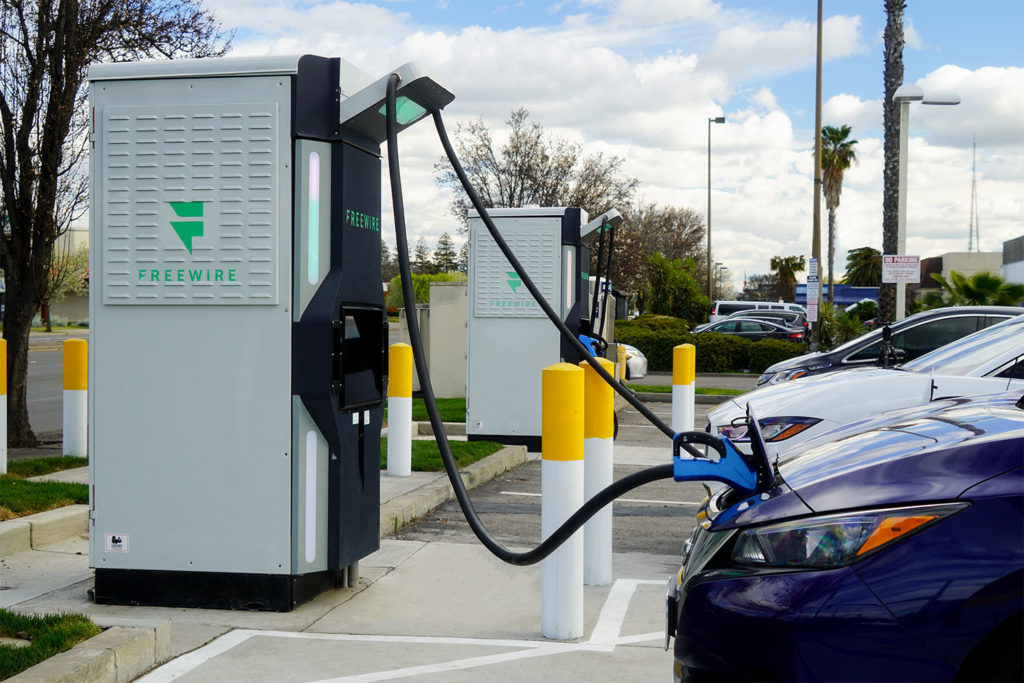The number of electric vehicles (EVs) on the road is expected to reach 130 million in 2030.
Many organizations are rushing to figure out how to install direct current fast chargers (DCFC) to meet the rising demand for EV charging. Cities, retailers, universities, corporate campuses, and other entities will benefit by providing EV charging as a service. Still, they can get discouraged by the logistical and financial complexities of pursuing an EV charging project.
Here are the three main cost drivers for DCFC projects and discuss how site hosts can reduce these barriers of entry to meet the global transition to electric transportation.
At a high level, DCFC project costs can be segmented into the following buckets:
- Installation Costs → How much does it cost to install the infrastructure, including engineering and design, needed to deploy EV charging?
- Hardware Costs → What are the differences in DCFC product specifications and pricing?
- Energy Costs → What are the ongoing energy expenses associated with providing fast charging at a site?

Installation - Deep Dive Breakdown
To meet the high power demands of modern charging stations, site hosts need to consider the power availability at their site before committing to a DCFC project.
Many DCFCs require 480 V power to accommodate fast charging. Upgrading to 480 V power can add tens to hundreds of thousands of dollars to your project and creates additional complexities related to installation and site permitting. Site hosts should consider coordinating with the utilities early in the project process as it can take months to procure and install necessary supporting equipment. Power upgrades can require a new transformer on the site, resulting in lost land or parking spaces, which may force site hosts to redesign the layout of their parking lot.
The following are three considerations when installing DCFC infrastructure and the corresponding impact on your bottom line.
-
- Available electrical infrastructure
Problem: If 480 V power is not available at your site, it will add tens of thousands of dollars to your project cost.
Solution: Deploying DCFC, such as FreeWire’s Boost Charger, that can connect to commonly accessible 208 V or 240 V, or compatible with your existing power will reduce electrical upgrades. - Available space
Problem:DCFCs that require 480 V power may require transformer upgrades that can take up valuable parking spaces for your customers or visitors.
Solution: Deploying DCFC, such as FreeWire’s Boost Charger, that can connect to commonly accessible 208 V or 240 V, or compatible with your existing power will reduce electrical upgrades. - High upfront cost of installation
Problem: Design, permitting and installation add up. Consider public funding sources to offset project costs.
Solution: There are a number of incentives available to address installation costs, which include utility make-ready programs that cover the cost of installation.
- Available electrical infrastructure
Hardware - Deep Dive Breakdown
DCFC hardware cost can vary greatly based on quality, features, and power output. Cost generally increases with power output; therefore a 350 kW charger can be significantly more expensive than a 50 kW charger.
Some DCFC models include integrated energy storage (FreeWire’s Boost Charger) or feature attached solar panels among other offerings. When deciding which hardware to go with, I recommend site hosts consider the following questions when considering DCFC hardware:
- Are significant electrical infrastructure upgrades required to meet EVSE power specifications?
- Is additional construction necessary to accommodate DCFC?
- How might the DCFC impact your energy bill?
The following are three considerations when selecting DCFC hardware and the corresponding impact on your bottom line.
- Select the right charger for your site
Problem: A high power charger, or additional features may not be necessary for your site application. Assess your EV or customer EV needs to remove unnecessary additions.
Solution: A 350 kW charger may not be necessary for your site. 120-150 kW can be adequate to accommodate most current and next-generation EVs. - Available space for installing DCFC
Problem: Suppose your proposed DCFC site is located in a space constrained area. In that case, the additional electrical infrastructure required may further reduce the available parking, or may not be possible to install at all.
Solution: Consider DCFCss that require less space or supporting infrastructure, including lower power chargers or battery-integrated DCFCs. - Cost of electricity
Problem: If you are in an area with high demand charges, having EV drivers pull over 100 kW at your site can cost anywhere from $10,000-$20,000 per year in energy costs.
Solution: Assess the impact of your selected charger on your energy bill. Consider smart charging, time of use scheduling, or energy storage to mitigate ongoing costs.
Energy - Deep Dive Breakdown
DCFC stations are capable of delivering a high power charge, from 50 kW to over 300 kW of power to EVs, fully charging vehicles in 30 minutes or less. In states such as California, Massachusetts, New York, Colorado and Florida, where pulling large amounts of energy at peak times is costly, DCFCs can become a significant operating expense for site hosts. Rocky Mountain Institute (RMI) noted in their DCFC rate design study that demand charges triggered by DCFC EV charging sessions constitute a significant barrier to the business viability of owning and operating DCFCs.

The following are three ways to address your charger operating expense and the corresponding impact on your bottom line.
- Add or integrate energy storage with your charger → Battery-integrated chargers can lower your operational expense by reducing energy consumption at peak hours without sacrificing charging speed.
- Pair your charger with demand management software → Some EVSE models offer demand management software that curtails power consumption during peak hours. This can relieve site hosts of having to constantly monitor the charger’s energy usage, but can decrease the charging experience for the driver as charging speed may be reduced.
- Understand your utility rate plan → Before installing EV charging, it is imperative to confirm the rate tariff your site is subscribed to. Some utilities offer custom EV charging rates which can reduce the cost of operating a DCFC. However, regardless of the rate tariff you choose, charging during peak times will incur a higher cost.
About The Author

Arcady Sosinov is Founder and CEO of FreeWire Technologies. Prior to FreeWire, he spent almost a decade in finance and investment management. Arcady holds an MBA from UC Berkeley and an economics degree from Boston University.

